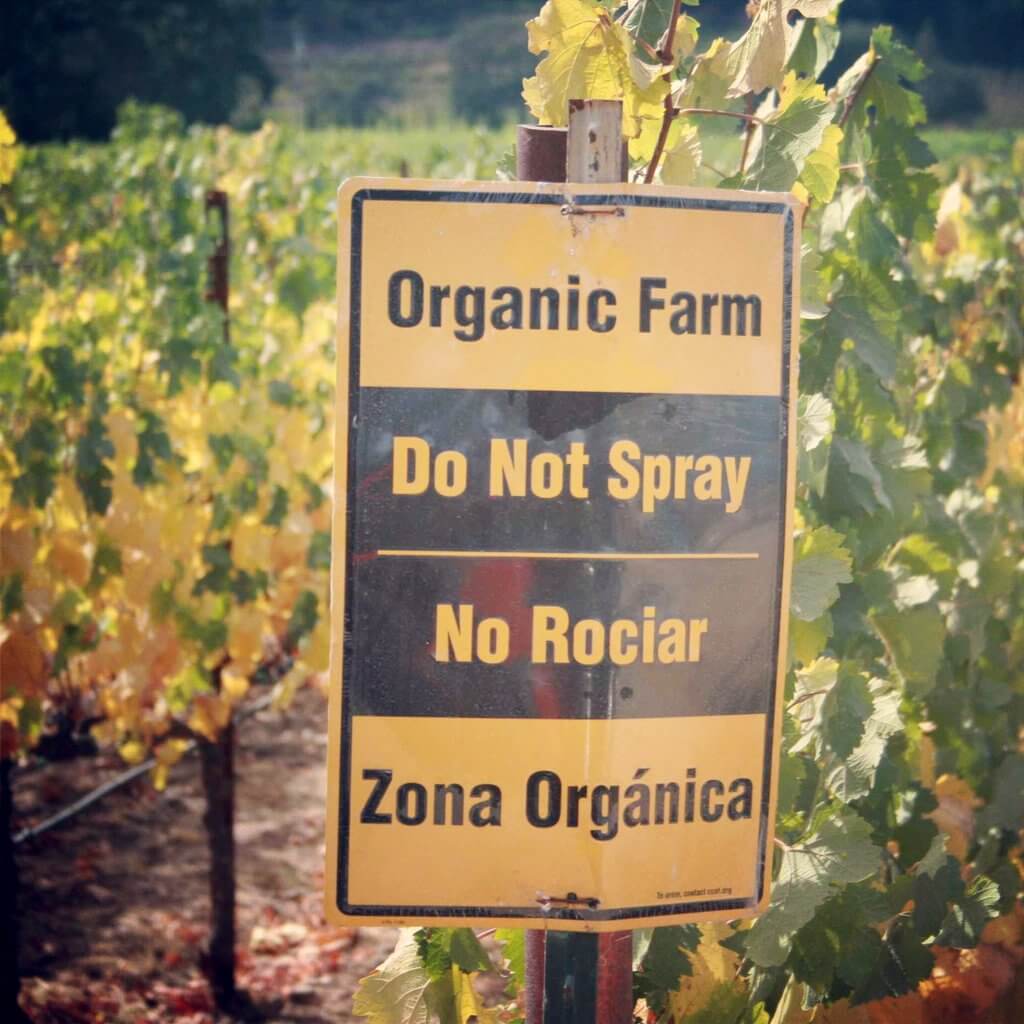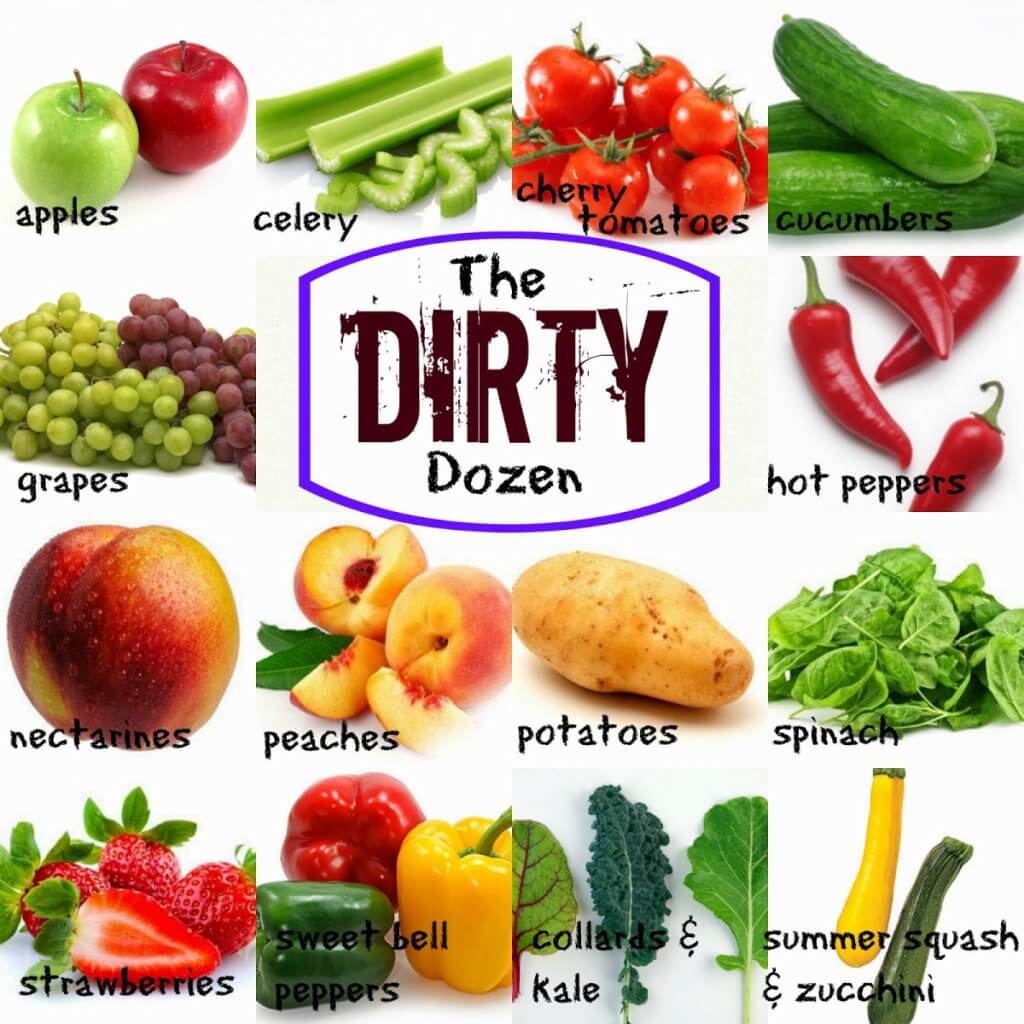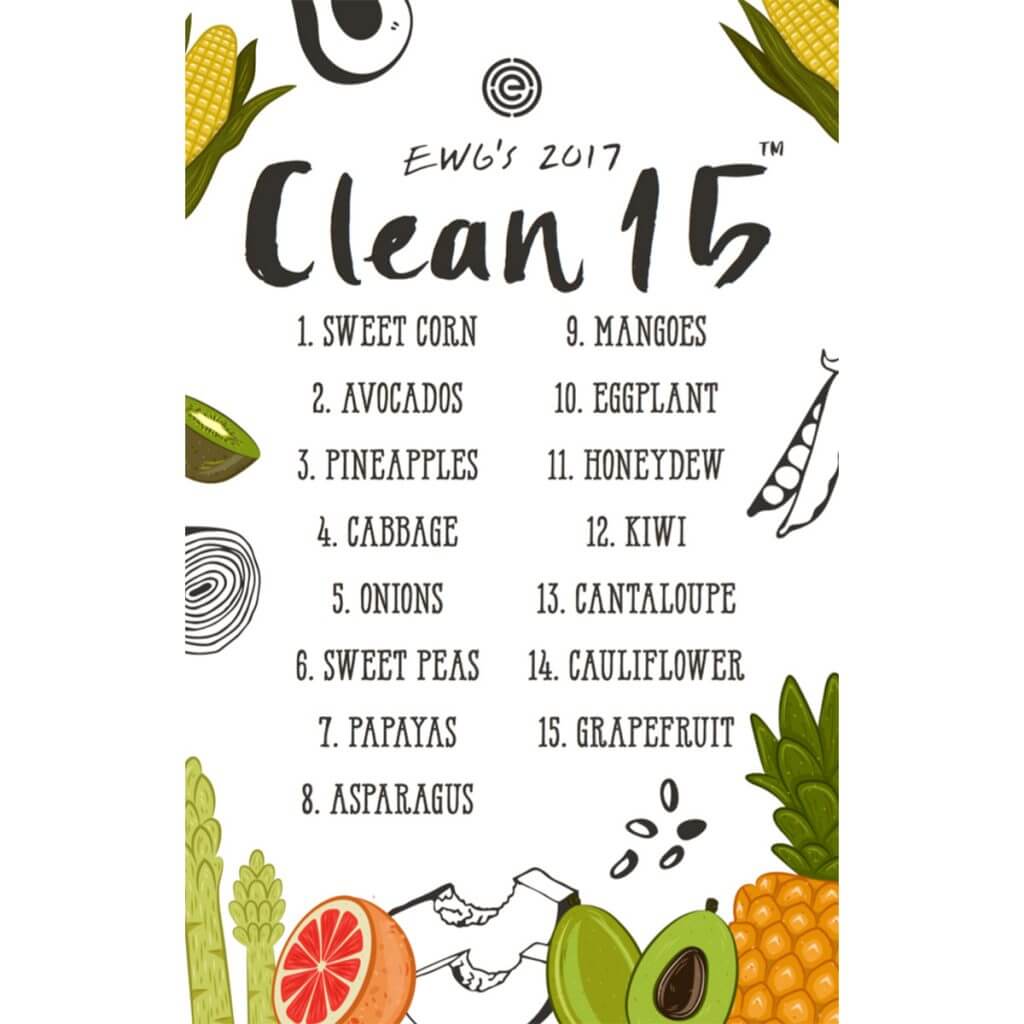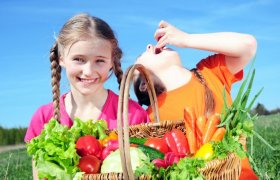Are Organic Foods the Healthiest Option?

If you’re keeping abreast of any media, social or mainstream, you’ve probably noticed one of this decade’s hottest buzzwords: organic. Passing through produce at the grocery store, you’ll see a significant difference in price between conventionally produced options and their organic alternatives. So what exactly does ‘organic’ mean, why does it cost so much more, and is it truly necessary in promoting the healthy diet and development of your child?
What is Organic?
Lots of foods call themselves organic, but the safest regulations to stick by is the USDA’s seal of approval. In order to be USDA approved as an organic product, the food you’re purchasing must: be grown in soil that is free of most synthetic pesticides, not genetically modified, free of antibiotics or growth hormones, and given feed that is organically grown (if you’re purchasing meat).
The circumstances surrounding an organic product’s development must have been clean from prohibited substances for at least three years, according to the USDA’s official website. Meat must be procured from an environment in which the animal was allowed to behave as it normally would, i.e. free grazing and not fed any unnatural additives.
Multi-ingredient food stamped as organic must be largely free of additives, artificial flavors, and artificial coloring. There are a few minor exceptions to this, but on the whole your product is cleaner and far less processed than alternatives. Additionally, anything packaged as organic must be 70% organic in its make up, and the remaining 30% must still abide by guidelines that prohibit genetic engineering.
Potential Health Benefits
There are plenty of reasons people cite for switching their diet to mostly organic food. Environmental impact comes up (and is often debated—which we’ll get to later), but by and large it seems that the organic trend boomed due to its perceived health benefits. “Clean eating” is perhaps at its trendiest, so what exactly are we talking about when we talk about the superiority of organic food in relation to our well-being?
What You’re Avoiding
 Most of the discussion around organic products revolves around what you are avoiding rather than what you are receiving. Organic farming can be summed up in its efforts to avoid unnatural additives in its food and soils. So in planning an organically based meal for your family, you’re ensuring that they will not be ingesting food that contains or touched a variety of chemicals of which researchers are still determining the hazard levels.
Most of the discussion around organic products revolves around what you are avoiding rather than what you are receiving. Organic farming can be summed up in its efforts to avoid unnatural additives in its food and soils. So in planning an organically based meal for your family, you’re ensuring that they will not be ingesting food that contains or touched a variety of chemicals of which researchers are still determining the hazard levels.
Glyphosate (Roundup)
Glyphosate is the most commonly sold herbicide, also known more colloquially as Roundup. A group of environmental health researchers are calling into question the safety of such a chemical, arguing that its impact on health has not been closely examined enough to properly mark such a product safe, especially considering its wide consumption.
Prior judgment of glyphosate as a non hazardous agricultural tool relied on less than 300 studies, none of which were peer-reviewed. While health agencies in the United States and Europe have deemed it safe, a branch of the World Health Organization have found it to be a likely human carcinogen and linked to an increased risk for cancer.
Chlorpyrifos
Chlorpyrifos is a widely used pesticide that recent research from Columbia University has linked to developmental delays in infants and young children. Initial studies found that chlorpyrifos caused brain damage in baby rats, and further analysis linked it to lower IQ levels in human children around age seven, as well as hyperactivity and cognitive attentive disorders.
Data also found children whose mothers were exposed to chlorpyrifos to be smaller at birth up through age three. Columbia’s study did not definitively prove causation over correlation but did see a dose-response trend in which children with higher exposure to the pesticide saw increased developmental delay.
Though there has been a strong push for many years to ban chlorpyrifos, EPA chief Scott Pruitt recently ruled to keep it on the shelves, meaning there’s still a high probability it’s in your food.
Cadmium
If Cadmium looks familiar to you, that’s probably because you’ve seen it before. Number 48 on the Periodic table, cadmium is a chemical element recognizable as a blueish-white soft metal similar to zinc and mercury. It is found in all rocks and soil, but can be hazardous to human health in large amounts. It is a known human carcinogen and OSHA warns against frequent or high-volume exposure to it as it can negatively impact the cardiovascular, renal, gastrointestinal, neurological, reproductive, and respiratory systems.
Most regulations are in place to avoid inhaling it, but organic food is estimated to carry 48% less cadmium than conventionally produced foods. When examined by the British Journal of Nutrition, past studied yielded inconclusive evidence in terms of the exact amount of health benefits linked to switching to an organic diet to avoid cadmium, but the authors of the research did still suggest trying to reduce cadmium intake.
What You’re Getting
The organic trend isn’t just about what you’re (rightfully) missing out on, either. As of 2016, the British Journal of Nutrition also gathered from the 343 studies they analyzed, that organic dairy and meat carry roughly 50% more omega-3 fatty acids. This is a byproduct of the animals being allowed to graze on grass and feed rich in omega-3, which then translates to higher levels in the food they produce for us.
Farming methods likewise have an effect on produce, as organically procured agriculture is believed to carry higher levels of antioxidants, anthocynanins, polyacetylene, and flavonols. The benefits of these nutritional boosts include anti-inflammatory properties, and increased protection from cell damage, leading to a stronger immune system. The exact amount of each micronutrient necessary to influence our health significantly is still unknown, however, leading to continued debate over the actual effectiveness of switching over to a strictly organic diet.
Where To Begin
If you have the expendable income to buy organic and you feel so inclined, it certainly isn’t hazardous to your health. But it can seem tricky: what is best to splurge on, and what isn’t highly altered by it agricultural upbringing? The simplest place to start is probably the “Dirty Dozen”. These twelve foods are said to contain the greatest amount of pesticide and chemical residue on them. Swap out your conventionally produced options for their organic mates.
For a quick starter pack, here is the “dirty dozen and clean fifteen.”
Dirty Dozen
 Some produce sees more pesticide residue than others. Though an exact order of which fruits and veggies on the “dirty dozen” carry the most chemicals is still debatable, the following twelve items are agreed to be the greatest culprits.
Some produce sees more pesticide residue than others. Though an exact order of which fruits and veggies on the “dirty dozen” carry the most chemicals is still debatable, the following twelve items are agreed to be the greatest culprits.
Apples, peaches, nectarines (imported), cucumbers, and potatoes all appear on the list but are easy to peel. Shucking the skin of these foods eliminates most of the chemical remnants, though it also does lower the nutritional value given that a great deal of the healthy vitamins and minerals we absorb from these foods are present in their skins.
Celery, bell peppers, strawberries, grapes, spinach, lettuce, and domestic blueberries are all tougher items to navigate and so the priorities when buying organic. Collard greens, kale, and green beans are lower on the index but climbing, so take that into consideration when sorting your shopping list.
Clean Fifteen
Alternately, there are roughly fifteen kinds of produce that the food science community views as safe to purchase, even when farmed using conventional means.
For the fruit lovers and readers with a sweet tooth, you’ll be pleased to find pineapple, mango, corn, kiwi fruits, watermelon, and cantaloupe on the list. White, red, and sweet onions are also clean, so prep your stir-fry. If you want something a little more tart, grapefruit clocks in safely. Asparagus and cabbage are great barbeque and picnic favorites. And sweet potatoes and avocados also make the cut if you’re looking for a little more creamy comfort.
 What’s Better for the Environment?
What’s Better for the Environment?
While there is a possibility that organic alternatives may influence our health, we also should consider the environmental impact of organic farming. When possible, buy locally so as to help reduce the necessity of packaging and transportation for your food, both of which can add up in waste and fuel emissions.
Land Use
One of the chief considerations in determining if organic farming is actually better for the earth is the land appropriated to yielding crops. If it were not necessary to feed us, it could be used for other environmental progression, such as wildlife habitats, renewable energy farms, or to plant the botany that helps reduce carbon levels. So the ideal is a situation in which the least amount of acreage yields the most amount of food.
A Meta-analysis in 2012 compiled all methodologically sound research to date to call into question the best farming practices. Organic farming appears to produce roughly 75% of the total sum that conventional farming methods create. But the good news is not all organic products are made equal in this regard, so if you intend to buy organic but worry about conserving the environment, consider picking your food based on whether it is an efficient use of land.
Most organic fruits (including tomatoes), organic oilseeds (sunflower and canola), and organic legumes (peas and beans) all performed at statistical ties or close approximations when compared alongside their conventionally farmed counterparts.
Organic grains and vegetables scored considerably lower, with 26% less productivity among wheats, corns and other cereals, and 33% amid vegetables. Much of this is tied to the importance of nitrogen in a particular food’s developmental process. The crops that utilized their nitrogen supply most efficiently scored better in this regard, while the ones that required a surplus (which can be found in synthetic fertilizers) had trouble thriving.
That being said, data obtained from Meta-Analysis is not always perfect and given the increased demand for organic sustainability since 2012, it’s possible that more farmers are perfecting their techniques and helping to close the gap between organic and conventionally produced crop yield.
Reductions: Soil, Herbicides, Energy
According to a 2016 column in the Washington Post, there may in fact be some sincere environmental benefits to buying organic. The piece references a long-running juxtaposition between organic and conventional farming methods, with data stretching back as far as 1993.
This particular study touts that though conventional farming methods do conserve land use (due to yielding higher amounts of crop per acre) and help to fight erosion, organic farming also has some considerable benefits in the reduced amount of soil, herbicides, and energy required in food production.
Ongoing Debate
As it stands, there is no clear answer as to whether organic food has a notable impact upon our health, or if it really is better for the environment. Warring sides of the agricultural industry have high stakes in this fight, resulting in a great deal of studies, not all of which follow proper methodology in their research and analysis.
What we can pretty confidently glean is that switching to an organic culinary lifestyle certainly can’t hurt. So if you have the room in your budget to stock up on those shiny organic apples, have at it. And if it’s not all that feasible for your family, don’t sweat it: all experts are in agreement that what we eat is more important than how it’s brought to our table.







